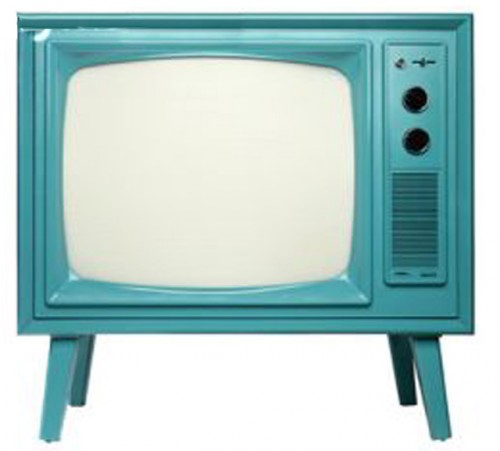“Hey, don’t let me forget to TiVo Two and a Half Men”—said nobody ever.
NPR has been running a series that looks at the ways in which new technologies are changing how we consume television[i]. The latest installment, based on an interview with Jessica Helfand, author of Screen: Essays on Graphic Design, New Media and Visual Culture has a troublesome tone. Helfand worries that on-demand television is ruining our attention spans, as we consume only what we want, when we want. She worries that we watch on our own time, rather than as part of a collective schedule-following community. She worries that content will have to get shorter, more easily consumable, and that the focus will shift from away from the story, and towards the medium itself. Referencing a colleague, she labels today’s media consumption environment as a “narrative deprivation culture.” Below are a few representative quotes from Helfand:
“The impatience with which people have come to expect everything to be delivered to them is a terrifying prospect.”
“These are kids who don’t watch an entire episode of Saturday Night Live, they just go and watch the bits they want to see. They wait till a series comes out on Netflix, and they watch it all at once instead of the classic episodic nature”
“The unfortunate thing, I think, is that so much then gets expended on thinking about the box or the screen…instead of the content, and the ideas and the innovation that we bring to it, creatively and intellectually.”
I argue instead that the new one-to-many media ecosystem[ii] empowers the consumer, and has the potential to facilitate deep and complex programming. What Helfand sees as a “terrifying prospect” I see as consumers taking control of their consumptive practices. Why watch bad sketch comedy instead of isolating the quality pieces? Indeed, we can imagine that such selective consumptive practices inform content creators more precisely of their strengths and weaknesses, and potentially push them to achieve quality at a more ubiquitous level.
I take particular issue with her critique of watching shows continuously rather than in traditional episodic fashion. To continuously watch a show enables continuity throughout the season(s), with complex story lines and multi-faceted narratives. It rejects the stand-alone-episode style of traditional sit-coms and instead engages the viewer in a holistic and often dense narrative. Moreover, this type of consumption requires patience, as the viewer must wait until the show becomes available in its final form before consuming. For example, if I think a show is going to be really good, I wait until the entire series has run its course before viewing any of the episodes. Concretely, this means that only once Treme’s final season is available via Netflix will I begin the series. I want to be immersed. I want to follow the nuance. Far from narrative deprivation, I actively seek out the full narrative experience. And because I want these things, I wait to consume. Finally, continuous (rather than episodic) consumption is highly ritualistic and potentially community building. Yes, I spent a full pajama-clad week watching The Wire, surrounded by pizza boxes and half-full cans of soda. This was a great F-ing week!! It was a week shared with similarly engrossed loved ones, marked by fond memories, deep discussions, and a sense of appreciation for a well told story.
In sum, I argue that the contemporary media consumer is not impatient, isolated, or short on attention, but purposive, selective, and highly engaged.
However, I do agree with Helfand that the changing media landscape should be looked at critically, and when viewed with a critiacl eye, it is indeed clear that this ecosystem is not without troubles. These troubles, however, are quite different from those Helfand presents. They are not a result of a decreased collective attention span, but a lag between a market system and consumer demands.
The main trouble is that “success” is measured in advertising dollars at a time in which the shows we really like, we tend to watch commercial free. The shows we really like, we watch online, through streaming services, or at our leisure—courtesy of TiVo. Although this facilitates an active and rich consumptive experience, it is not financially advantageous for content producers (i.e. major production companies and networks). Instead, this system privileges the shallow, templated, stand-alone-episode kinds of shows. The kinds of shows people half pay attention to while eating dinner. The kinds of shows that people happen to catch and settle to watch, rather than those that they think about, anticipate, plan for, and engage with in purposive ways. This system allows shows like two-and-a-half men to run for ten consecutive seasons.
The question then, is how to shift the economics of television programming to repair this schism between the interests of viewers and those of producers. Would we, as consumers, be willing to sit through advertisements to be able to maintain consumptive control and encourage quality content? If not, what other solutions are viable?
Jenny Davis is an (almost official) post-doctoral researcher at Texas A&M University and a weekly contributor for Cyborgology. Follow Jenny on Twitter @Jup83
Pic Creds:
- http://www.smartgirl.org/writing/forum/archives/television.html
- http://blog.tivo.com/2012/09/introducing-the-tivo-stream/
[i] It is interesting that the content which makes up “television shows” is tied to its original technology of transmission (i.e. the television), despite its availability through multiple media. As far as I know, we do not have language with which to describe the television show in a way that decouples it from this technology. As Chetan Chawla (@chetanChawla) states in a conversation with me on Twitter: “I don’t have a ‘TV’ but I watch TV shows.” This in contrast with “movies” which do not denote a particular transmission device (e.g. a movie is a movie whether it’s watched on a television set, a theater screen, an ipad etc.).
[ii] Certainly, we cannot separate one-to-many media from UGC. However, for the purposes of brevity and clarity in this post, I isolate my argument to “traditional” (i.e. network/corporate produced) television shows.



Comments 4
SAA — October 30, 2012
Interesting piece!
You wrote: "Finally, continuous (rather than episodic) consumption is highly ritualistic and potentially community building."
I'd argue that either 'continuous' or 'episodic' is community building--if others in the community are consuming similar content--or enough of it that they can have some shared experience.
What Helfand's concerns are really pointing to is an underlying awareness that there is a whole lot of heterogeny of personal media, communications, cultures, and yes, entertainment consumption going on in a world whose consumption and messaging behavior has changed due to the progression of technology and alternatives to broadcast, programmed content.
In our third paper on PolySocial Reality ( http://www.dfki.de/LAMDa/2012/accepted/PolySocial_Reality.pdf ) we discuss the impacts of partially intersecting networks on creating narratives that may or may not have the ability to resonate with anyone else's due to both the heterogenous nature of people and their preferences and the asynchronicity of their consumption in this medium.
Maybe, the narrative _is_ over.
Long live the narrative.
The true problem here, with fragmented or differing narratives, is that humans need similar narratives (at least in some ways) to exist. Stories are our transmission methods. If there isn't enough overlap with asynchronous messaging, we lose meaning. (This was the topic of our TtW2012 talk, "PolySocial Reality: Augmentation and Experience.")
Lost meaning is lost cooperation. Lost cooperation is a really, really big problem.
SAA — November 1, 2012
I'm arguing that to a point, there can be a denigration with continuous consumption--if that consumption is heterogeneous, asynchronous and has little or no overlap with other people's continuous heterogenous, asynchronous consumption.
It is useful to break out of singular and dominant stories, but "mind the gap" ! Too little commonality can create too much fragmentation which begets all kinds of problems in societal structure.
In other words, what is critical in most societies is the exchange of heterogenous information between individuals to create and maintain a common layer of information. This last point is critical to cooperation and exchange of common information necessary to maintain the societal system.
To go even further, one might say that the majority of time spent using language in most societies seem to be for this purpose.
Narrative Consumption and Production: A response » Cyborgology — November 9, 2012
[...] week Jenny Davis posted a great critique of the position taken by Jessica Helfand, that on-demand TV is corrosive for both the attention of [...]